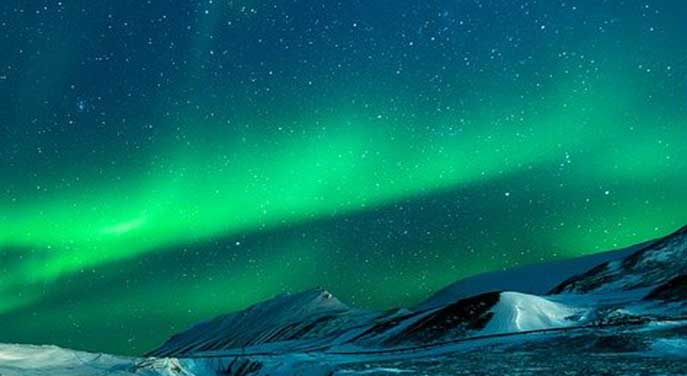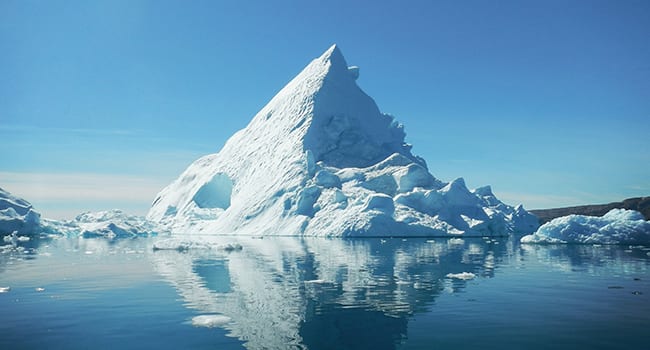 At the height of the cold war, the polar region was one of the centres of the superpower’s shadow war.
At the height of the cold war, the polar region was one of the centres of the superpower’s shadow war.
Today, a rapidly melting polar ice cap is once again making the Arctic the nexus of a modern great power rivalry. Canada, whose long-standing territorial claims in the region date back to the various Hudson Bay Company land grants, seems stuck on the sidelines.
On June 16, 2016, Russia unveiled the lead ship in a new class of nuclear powered icebreakers. Aptly named Arktika, the new behemoth measures 173.3 metres long and 34 metres wide at the beam, and it cost approximately $2.5 billion to construct. Powered by two nuclear reactors, it can cut through ice three metres thick, and is described by Russian officials as “the largest and most powerful” icebreaker in the world.
On average, Arctic sea ice is between two and three metres thick, which means the Arktika can travel almost anywhere in the polar region on a year around basis. There are a few regions where sea ice can measure up to four to five metres thick, but these are relatively rare. The ship is scheduled to begin service in 2018.
Russia has more icebreakers than any other country in the world. In fact, it has more icebreakers than all of the other countries of the world combined. While Russia’s long Arctic coastline is clearly a factor in Russia’s nuclear icebreaker program, the Kremlin has made no secret that it has broader ambitions in the region.
Russia resumed intercontinental bomber flights over the Arctic in 2007. That same year, it also planted a Russian flag, constructed from virtually indestructible titanium, on the sea floor directly over the geographic north pole.
 |
| RELATED CONTENT |
| Russia’s most formidable weapons? Oil and gas By Rashid Husain Syed |
| Arctic security is being transformed by Ukrainian-Russian war By Robert Huebert |
| Why was Canada kept in the dark about “AUKUS”? By Matthew Bondy and Jeffrey Collins |
Moreover, of the four million people who inhabit the region surrounding the Arctic Ocean, between the North Pole and the Arctic Circle, roughly two million are Russian. The other two million are divided between the United States, Canada, Greenland (an autonomous Danish territory) and Norway. Iceland, though technically an Arctic nation, does not actually border the Arctic Ocean. The Arctic seabed is believed to hold some 15 per cent of the world’s petroleum reserves and 30 per cent of its natural gas reserves.
Russia has asserted that the Lomonosov and Mendeleev Ridges, which extend along the Arctic seabed, are an extension of the Eurasian continent and the territory surrounding them should therefore be included as part of the Russian continental shelf. The Lomonosov Ridge runs some 1,800 kilometres, and spans the Arctic Ocean almost all the way to Canada’s Ellesmere Island. The Mendeleev Ridge is shorter, but covers the central area of the Arctic Ocean, including the geographic North Pole.
The United Nations (UN) Commission on the Limits of the Continental Shelf has declined to rule on Russia’s claim for an extended Russian continental shelf and has asked for additional documentation and research. Danish scientists, meanwhile, have contended that the Lomonosov Ridge is actually an extension of the Greenland continental shelf. Should the UN uphold Russian claims, both the geographic North Pole and a large portion of the Arctic Ocean would come under Russian control.
Ottawa, in turn, has asserted that the two ridges are part of the Canadian continental shelf. While Canadian sovereignty over its northern territories and islands has been recognized by the other polar countries, Ottawa’s claims that the various channels and straits, and in particular the Northwest Passage, are also part of Canada’s sovereignty are not universally accepted. Both the United States and Russia have argued that the Northwest Passage is an international waterway. The Arctic offers a sea route from East Asia to Europe that is some 6,700 kilometers shorter than current routes.
Various Canadian governments have announced ambitious plans to build a fleet of modern Arctic icebreakers to defend Canadian sovereignty in the Arctic Ocean, but these programs, the most recent by former Prime Minister Stephen Harper in 2007, have gone nowhere. Invariably they have fallen victim to a combination of budget cuts and escalating programs costs that have seen both the size of the program reduced and the expected deployment date pushed off into the future. As of 2016, Canada still lacks an all season ice breaker fleet capable of operating in the Arctic Ocean, and there is little prospect of having one ready anytime soon.
In the meantime, the Kremlin’s patient chess masters are planning their next move.
Joseph Micallef is a historian, best-selling author and, at times, sardonic commentator on world politics.
For interview requests, click here.
The opinions expressed by our columnists and contributors are theirs alone and do not inherently or expressly reflect the views of our publication.
© Troy Media
Troy Media is an editorial content provider to media outlets and its own hosted community news outlets across Canada.

